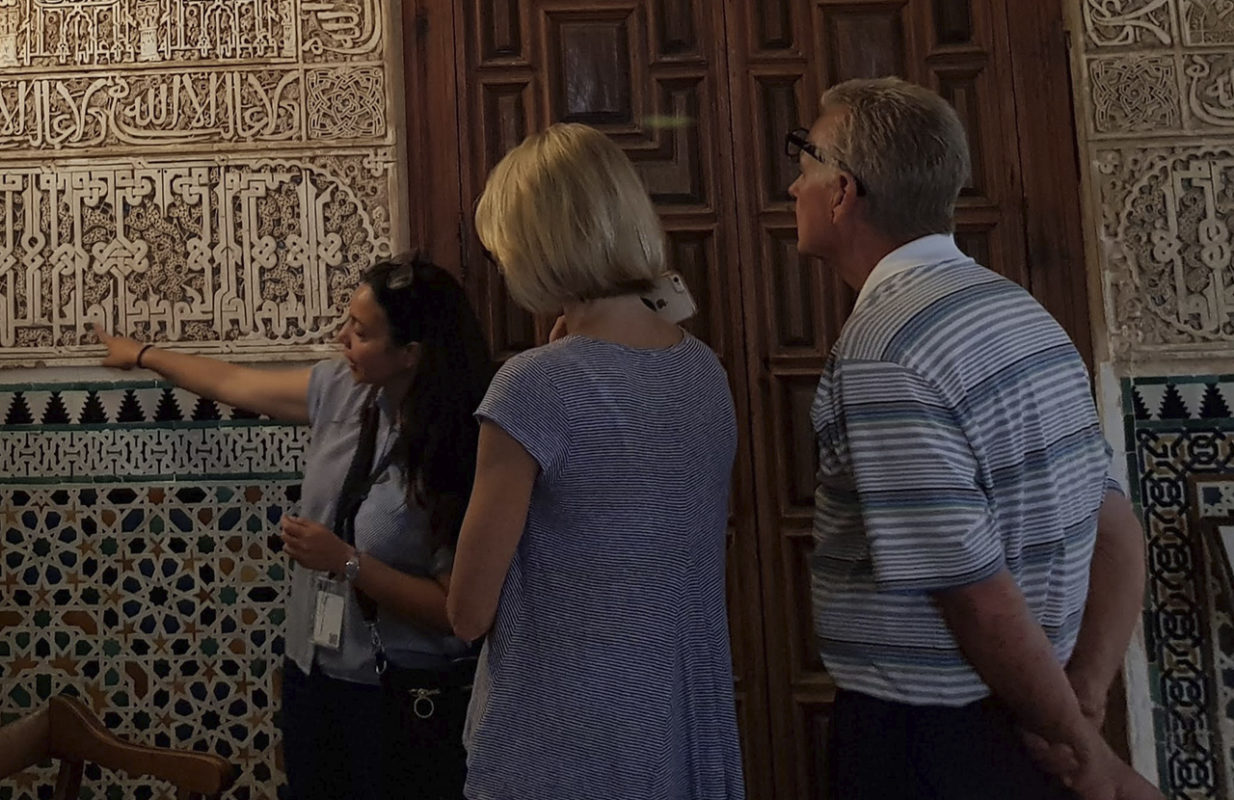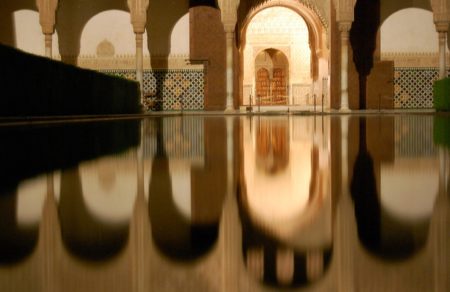Of all the world’s monuments, the Alhambra Palace in Granada is one of the most visited in Andalusia, Spain and even the world. No matter how much you hear about it before you go, it always manages to surprise and delight. This is exactly why visitors are often left wanting more.
We would like to share some interesting facts about the Alhambra that few people know, which will greatly enrich your visit.
Índice de contenidos
- 1 Discover 12 things you never knew that will improve your visit to the Alhambra of Granada
- 1.1 Why is the Alhambra called the red fortress or the red castle?
- 1.2 Different social classes did not cross paths
- 1.3 The walls can speak
- 1.4 A monument of Al-Andalus, a monument of Christians
- 1.5 The Alhambra: quite a survivor
- 1.6 The day the Gate of Justice opens, the world will end
- 1.7 The disabled soldier who protected the monument in the War of Independence
- 1.8 Looting and thievery in the Nasrid city
- 1.9 Mathematics: the Alhambra’s other queen
- 1.10 The legend of the sultana’s cypress tree
- 1.11 Who built the Alhambra?
- 1.12 The Torre de las Infantas hides a princesse’s desolation
Discover 12 things you never knew that will improve your visit to the Alhambra of Granada
Get ready to learn 12 curiosities about the greatest palace of Andalusia that will make your visit much more interesting.
Why is the Alhambra called the red fortress or the red castle?
One of the interesting facts about the Alhambra is that it is called the Red Fortress due to a very simple reason; the word “Alhambra” means red or vermilion castle in Arabic. They probably chose that name because of the color of the walls and towers that surrounded the citadel.
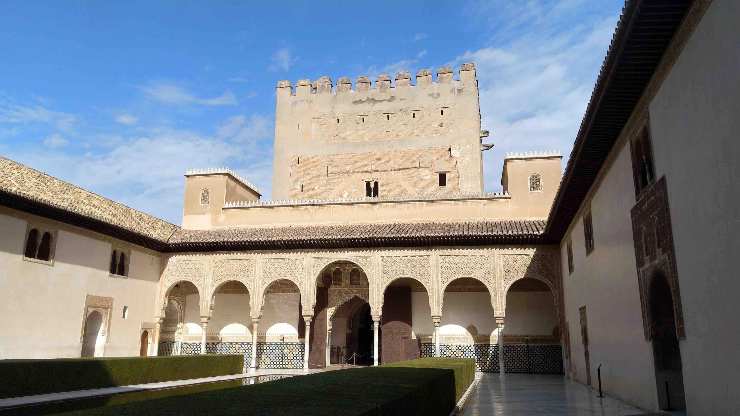
When you go to the Alhambra, you are allowed to stroll around freely, unless there are special paths set up in advance because of conservation work. However, while you are there, bear in mind that in the past when people lived there, each social class had its own set way of approaching the sultanate.
There was a corridor for the cleaning staff, another one for scribes and administrators and finally, an entrance for the sultan and his family called the royal court walk. They shared the same space, but without mixing!
The walls can speak
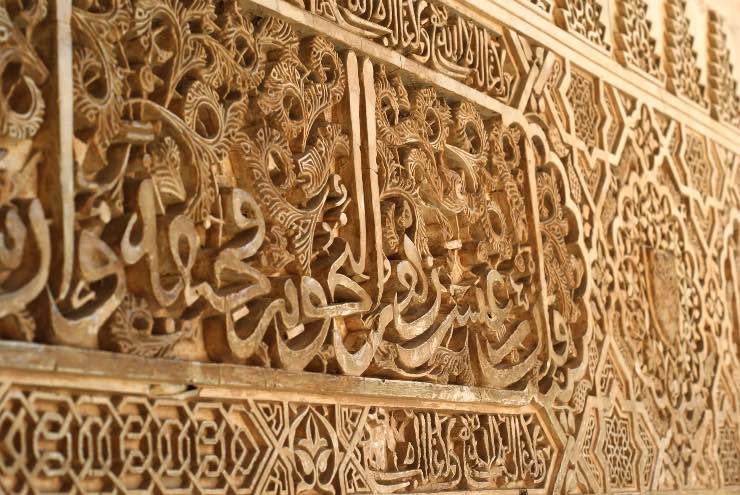
Another secret of the Alhambra is that many of the walls contain inscriptions. They are not merely decorative but instead consist of poems and quotes from the Qur’an which filled everyday life with spirituality and beauty. If you would like to know more about these before your visit, you may want to check out the book “Reading the Alhambra” by José Miguel Puerta.
A monument of Al-Andalus, a monument of Christians
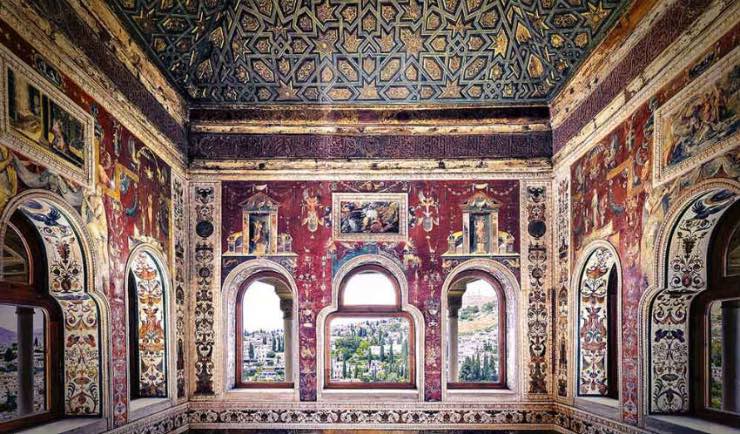
Did you know we spoke Arabic in Granada for 800 years? That’s longer than we’ve been speaking Spanish, which is why the people from Granada have such a strong Arabic influence.
However, this didn’t stop the Catholic Monarchs and their descendants from falling in love with Granada. It’s true that it was the last city they took back from the Moors, a feat which took them a very long time, but once they saw its beauty, it became the jewel in the crown. That is why this Moorish palace contains entirely Christian spaces, including the Palace of Charles V or the Queen’s salon, reintegrating Granada into Spain once more.
The Alhambra: quite a survivor
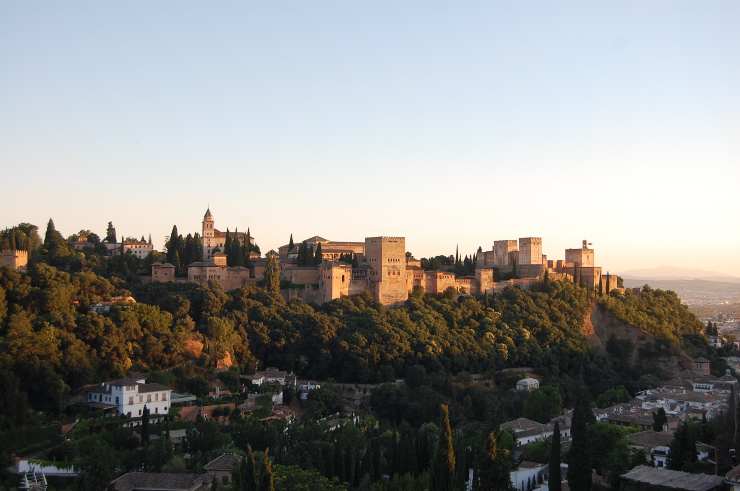
When you look out from the Mirador de San Nicolás and see the Alhambra, you wonder how it is possible something built so long ago remains standing. Especially when you compare it to the fragility of today’s buildings. Not only has it survived wars, but also earthquakes, as Granada is situated in an area of great seismic activity. Why is that? The walls of the Alhambra palace were built out of compacted earth and the columns contain a layer of lead between the base and column, a strategic military architectural feature, common in medieval fortifications.
Fascinating, isn’t it? But this is not the only reason, it is also because of the palace’s location, Sabika’s hill, which is one of the more seismically stable areas of Granada.
The day the Gate of Justice opens, the world will end
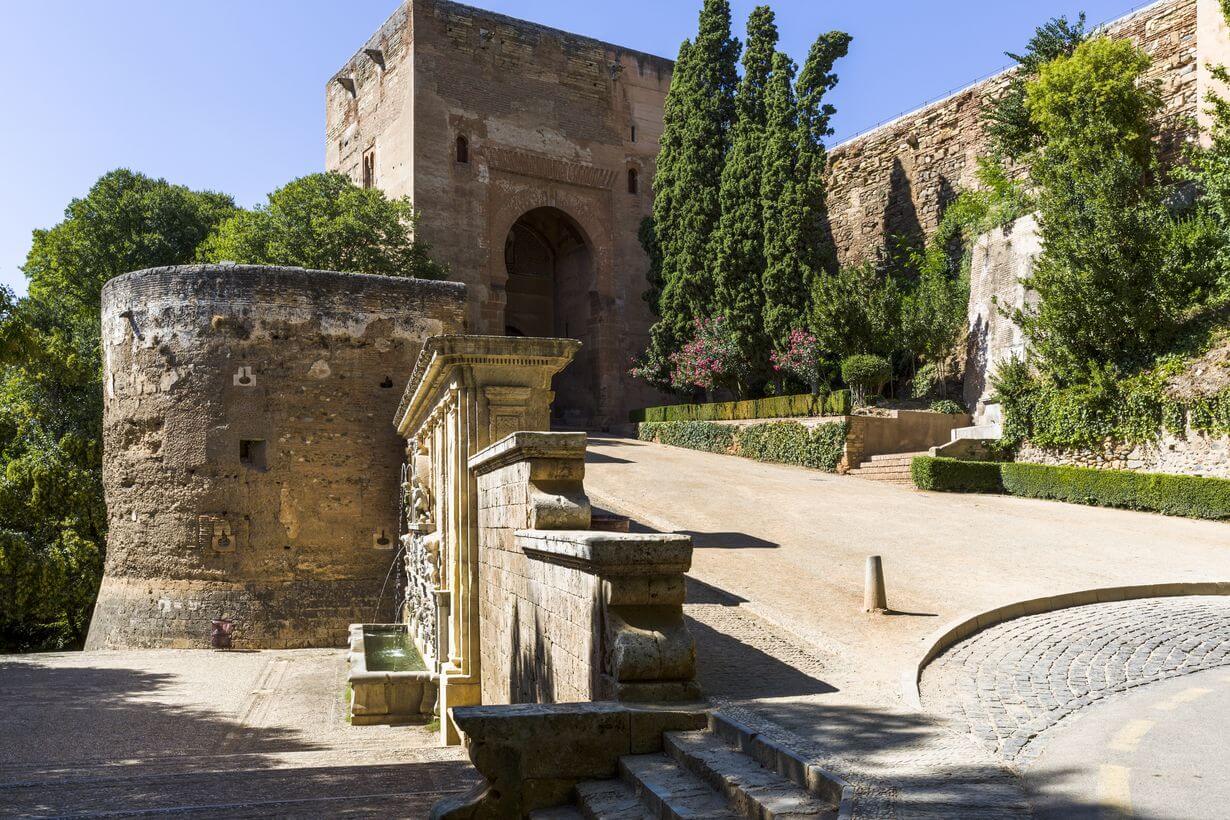
Another interesting fact about the Alhambra is that the city’s builders were so sure about the strength of their construction techniques that they thought the day when the Gate of Justice opened, the world would come to an end. The Gate of Justice features an important symbol of the Alhambra, a hand carved in the keystone of the gate’s arch alongside a key.
The majestic nature of everything before them left no room for doubt: they were building life itself. If it vanished, everything would come crashing down. One of the legends of the Alhambra says that the carved hand and the key are placed so high because this way, no one would be able to touch them and if it ever happened, that person would have the right to be the owner of the Alhambra palace.
The disabled soldier who protected the monument in the War of Independence
In the early 19th century, Napoleon’s troops entered Spain. They were hoping to annex it and make it part of the French Empire. The Spanish people, using their work tools as weapons, defended their cities. As this occurred, the Alhambra suffered heavy bombing, but the brave corporal José García of the Cuerpo de Inválidos was able to place himself between a cannon shot and the walls of the Nasrid Palaces.
To pay tribute to his amazing feat, in the Alcazaba you can read “In memory of the corporal of the ‘Cuerpo de Inválidos,’ José García, who risked his life to save the castles and towers of the Alhambra from ruin in 1812.”
Looting and thievery in the Nasrid city
Respect for the history of the Alhambra and artistic heritage is a rather new concept. The site was actually abandoned for centuries. It was home to Granada’s paupers and wanderers. Many criminals went there to steal treasures. The turning point came with the arrival of an American romantic,Washington Irving. Together with his friend, Russian prince Dimitri Dolgorukov, he worked for years to restore the dignity the Alhambra deserved.
Mathematics: the Alhambra’s other queen
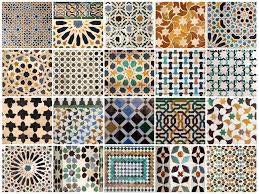
The tilework in the palaces is pure symmetry, and not a single corner fails to adhere to mathematical principles. It was designed to represent Allah’s grandeur on Earth. Therefore, it had to be perfect. However, its designers included one mistake which was invisible to the naked eye, because aiming for total perfection was also considered to be a defiance of God.
The legend of the sultana’s cypress tree
If there’s one thing you’re sure to find in the Alhambra, it is legends. Those who visit the Alhambra, often say it evokes times gone by and stories that are centuries old. One of these is the tale of a cypress tree in the Generalife.
This cypress tree bore witness to the passion that Morayma, King Boabdil’s wife, had for a knight of the Abencerrajes tribe, a tribe from Granada during the reign of the Nasrid dynasty. The lovers were discovered during a rendezvous and betrayed. Boabdil’s fury was unleashed, and he ordered that the throats of several members of the tribe be slit.
It is said that so much blood was shed that the stains on the fountain in the Sala de los Abencerrajes are not from rust, but rather from the blood of those whose throats were cut. The cypress tree saw the lovers’ passion, and the fountain the king’s fury.
Who built the Alhambra?
The Alhambra palace is composed of different parts: the Alcazaba, Nasrid Palaces, the Gardens of the Generalife, Carlos V Palace, the Medina, the cemetery, etc. The oldest place of all of them is the Alcazaba, a fortress with a lot of towers, used as a military base for the guardians of the sultan. It is believed that this part dates to the 9th century.
But the Alhambra was not built by only one Sultan, it was the work of consecutive rulers of the Nasrid dynasty. However, Mohammed I set the basis for the Alhambra by buttressing the Alcazaba, placed in Sabika, by constructing three new towers, among other actions. His sons and grandson, Mohammed II and Mohammed III, continued his work.
The Torre de las Infantas hides a princesse’s desolation
King Muhammad VII knew what love at first sight meant. That’s how he had fallen in love with his wife, and they later had three daughters. However, he hoped to protect his daughters from the rapture of love, so he locked them up in a tower. This would prevent anyone from seeing them at all. Two of them refused to obey, managing to get two knights to fall in love with them and rescue them.
The third, however, suffered a different fate. She was locked up for her whole life, filled with pain and despair, until she finally decided to put an end to her own suffering. When you stand in front of the Torre de las Infantas and see a window, take a closer look. Perhaps you can see the princess inside.
Every corner within the Alhambra harbors secrets. You can feel them as soon as you enter the surrounding woods, even before entering the site itself. The more interesting facts you learn about it, the more the palace’s enigmas unravel.
If you want to find out everything there is to know, we advise taking a guided tour. Check out our recommended Alhambra guided tours


